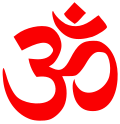| Bhrigu | |
|---|---|
 A painting depicting Bhṛgu | |
| Affiliation | Saptarishi |
| Genealogy | |
| Parents |
|
| Spouse | Kavyamata, Puloma, Khyati, Divyadevi, and Paulami |
| Children | |
| Part of a series on | |
| Hindu philosophy | |
|---|---|
 | |
| Orthodox | |
| Heterodox | |
Bhrigu (Sanskrit : भृगु, IAST : Bhṛgu) is a rishi in Hindu tradition. He is one of the seven great sages, the Saptarshis, and one of the many Prajapatis (the facilitators of creation) created by Brahma. [1] He was the first compiler of predictive astrology and also the author of Bhrigu Samhita , an astrological (jyotisha) classic. Bhrigu is considered a manasaputra ("mind-born son") of Brahma. The adjectival form of the name, Bhārgava , is used to refer to the descendants and the school of Bhrigu. According to Manusmriti , Bhrigu was a compatriot and companion of Svāyambhuva Manu, the progenitor of humanity. [2] Along with Manu, Bhrigu made important contributions to the Manusmṛti, which was constituted out of a sermon to a congregation of saints in the state of Brahmavarta, after the great floods in this area. [3] As per the Skanda Purana , Bhrigu migrated to Bhrigukaccha, modern Bharuch, on the banks of the Narmada river in Gujarat, leaving his son Chyavana at Dhosi Hill.
Contents
- Legends
- Testing the Trimurti
- Associated sites
- Literature
- Upanishads
- Bhrigu Samhita
- Lineage
- Shukra
- Chyavana
- Aurva
- References
- Sources
According to Bhagavata Purana , he was married to Khyati, one of the nine daughters of Prajāpati Kardama. She was the mother of Lakshmi as Bhargavi. [4] They also had two sons named Dhata and Vidhata. He had one more son with Kavyamata, who is better known than Bhrigu himself – Shukra, learned sage and guru of the asuras. The sage Chyavana is also said to be his son with Puloma, as is the folk hero Mrikanda. [5] [Maha:1.5] One of his descendants was sage Jamadagni, who in turn was the father of sage Parashurama, considered an avatar of Vishnu. [6] [7] [8]